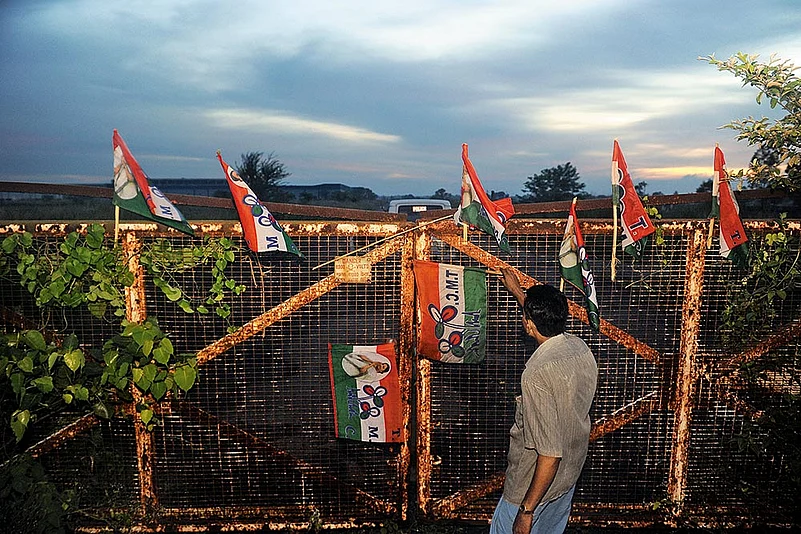On October 10, when politicians, industry captains, business analysts and media personalities were busy singing paeans to Ratan Tata a day after the 86-year-old industrialist’s death, Mahadeb Das, a resident of Singur in West Bengal, did not share the sentiments. The flood of admiration for Tata on TV channels, news portals and social media platforms triggered in him some bitter memories. He could not sympathise with Tata’s admirers, for Tata had hurt him and the wound had not healed.
“Tata never sympathised with people resisting displacement caused by their projects. On the contrary, he defamed legitimate people’s movements by attributing those to people with vested interests and his business rivals,” says Das. He refers to Tata’s December 2006 comment that the agitation in Singur against Tata Motors’ Nano plant was being fuelled by his business rivals and his 2009 comment blaming land agitation on people unconnected to the land concerned.
“It may sound superficial, but more often than not, the conflicts pertaining to land are provoked by individuals not involved in the deal, and who are inclined to exploit the situation,” Tata had said in 2009 regarding the anti-displacement agitations in different parts of the country that had prompted the government to take a relook at the industrial land acquisition policy.

The anti-displacement movements that finally led to the scrapping of the Land Acquisition Act of 1894 and the formulation of a new legislation in 2013—offering agricultural landowners greater protection and scope for compensation—included two agitations against Tata projects, Singur in West Bengal and Kalinganagar in Odisha.
Das, whose family lost 2.6 acres of land to the Nano plant and refused compensation, sees Tata as “a person happy to let governments do the dirty work for them”. To Das, Tata came across as “a man used to behaving in an entitled way, someone used to see his power talk for him”. “I don’t want to insult him or people fond of him. Tata may have done a lot for other Indians, but it is undeniable that the history of land conflict in India will be incomplete without mentioning the Tata group under Ratan Tata’s chairmanship,” he says.
Land conflict, indeed, troubled Tata right from the time he was at the helm of affairs in his group, one of India’s largest business conglomerates. In September 1991, barely six months after he took over from his uncle, J. R. D. Tata, protests broke out around Odisha’s Chilika Lake, with traditional fishers alleging that prawn culture, including the Chilika Aquatic Farms Limited (CAFL), an Odisha government-Tata joint venture, was adversely impacting the lives of the traditional fisherfolk. In 1992, protesters destroyed the prawn culture infrastructure. After the project got embroiled in the Odisha High Court in 1993, the Tatas withdrew.
The development model of the Tatas not only excluded the welfare of the displaced people, but also infringed on their rights to their land, forests and water resources as well as socio-religious practices.
Similarly, Utkal Alumina International Limited (UAIL), a consortium of Tata, Norsk Hydro, Hindalco and Alcan for bauxite mining and alumina refining in the Baphlimali Hills in Rayagada district of Odisha, faced local resistance right from the project’s inception in 1993. In 2001, the Tatas withdrew from the UAIL consortium after the death of three protesters in police firing—on December 16, 2000, at Maikanch village—turned the situation volatile. The Tatas saw no hope of any early solution to the conflict.
During 1995-96, the government of Odisha tried to acquire land from people, allegedly by using force, for the setting up of a steel plant and township in Chhatarpur and Berhampur blocks of Ganjam district, near the Gopalpur beach and port. The government required 3,000 acres of land, which would have meant displacing several hundred families. In the face of stiff resistance from the local people, the government, apart from using the police, had even used the National Security Act against a leader of the anti-displacement movement. However, the project reached a stalemate after the death of two women in 1997. The Tatas formally withdrew from the Gopalpur project in 2000, but kept the land with them.
Similarly, despite widespread protests spanning over two years, the Tatas continued with the construction of their Nano plant in West Bengal’s Singur, until Trinamool Congress (TMC) chief Mamata Banerjee’s movement pushed the state’s Left Front government on the back-foot. The Tatas quit Singur, but not without calling upon the people of Bengal to defeat Banerjee’s politics and stand by the Buddhadeb Bhattacharjee’s Left Front government.
In Odisha’s Kalinganagar, though, the Tatas did not flinch, despite stiff resistance since 2005 and the death of 14 protesters in police firing in January 2006. They took time and managed to win over a section of the protesters. While the Tatas and the Odisha government claim the plant—which became operational in 2015—is a grand success, Rabindra Jarika, who heads the Bisthapan Birodhi Janamancha (BBJM) that led the resistance against the Tata’s Kalinganagar steel plant, disagrees. Jarika says that the development model of the Tatas not only excludes the welfare of the displaced people, but also infringes on their rights to their land, forests and water resources as well as socio-religious practices.
“The Ho people bury their dead in their courtyard and then place a stone slab on it. The burial is called sasan and the stone slab is called sasandari. Every Ho house has the burial sites of their families. However, the project resulted in a common crematorium-cum-burial ground for all. Did Tata ever think of the tribal people’s loss of socio-cultural identity?” asks Jarika.
The BBJM alleges that the tribal people were ultimately the losers. Under pressure, some people in their late 40s and early 50s even accepted jobs in the plant and parted with their land, says BBJM. Now, they have already retired and are looking for new sources of income.
“Their next generation is migrating and working as daily-wage earners, as they have lost their traditional sources of income and sustenance,” says Jarika. While the industries have comprehensive planning for several decades of operations and enjoy the government’s long-term policy protection, the compensation that the tribals receive comes only as temporary relief amidst a permanent loss, he argues.
Criticism of the Tata group is not peculiar to Ratan Tata’s time. In Jharkhand, tribal rights activist Xavier Dias says, “The Tatas not only acquired the possession of thousands of acres of tribal land, but their mining projects also took away many lives. “The original name of Tatanagar or Jamshedpur was Kalimati. It was a tribal-dominated region surrounded by rivers and iron ore deposits. The Tatas needed iron for their plant and it was extracted through mining in the Saranda area. Both the plant and the mines were acquired by the Tatas by uprooting the tribals from their land,” says Dias, who has been fighting for the cause of tribals displaced in East Singhbhum and West Singhbhum districts on account of mining activities.

In 1927-28, tribals from Chirubeda, Balijore and Kodta, three villages of Noamundi block, were displaced for the Tatas to mine iron ore in the Noamundi hills of the Saranda forest range. According to 45-year-old Jono Hembram, his grandfather, Lamka Hembram, along with villagers of Kodta, had long pleaded for compensation and jobs from the company. Later, his uncles, Jairam and Nara Hembram, took the legal course, but lost the battle in 2018, as the Jagannathpur sub-divisional court ruled in favour of the company.
According to Zameen Bachao Samanvay Samiti (Land Protection Coordination Committee), an organisation that has negotiated with the Tata company several times to demand return of their land and compensation, the seven villages of Noamundi block that were taken for the Tata project had a small population at that time. Nevertheless, it forced more than 100 families to live a nomadic life. It is alleged that the displaced families lost around 700 acres of land as the tribals never had any land records.
The organisation alleges that along with their ancestral village and grazing land, the villagers also lost their place of worship. The Deshwali, or the Ho tribals’ place of worship, where Marang Buru, their God, resides, fell within the land acquired by the Tatas.
“Till today villagers displaced for Tata projects have not been rehabilitated. After fighting a long battle for their place of worship and several hearings in the Gram Sabha, the company, since 2012, allowed local people to worship once a year under their supervision,” says former MLA Mangal Singh Bobonga. “We are still demanding that the worship place of the tribals be completely handed over to them.”
There used to be many tribal hamlets around Agrawa Tola in Mandu block of Ramgarh district, Jharkhand, till 2000, with dense forest around the area. The tribals of these hamlets were not only displaced by the Tata coal mining projects, but they also lost their Sarna worship site and a natural spring that gave them a perennial supply of fresh water.
“Every industrialist grew at the cost of tribals and the Tatas are no exception. The Tatas and the likes extracted the minerals to take the country along the path of progress, but the tribals had to pay the price,” says Bobonga, a Ho tribal.
Dipankar Bhattacharya, general secretary of the Communist Party of India (Marxist-Leninist) (Liberation), says: “The Tatas may appear to be better than other industrialists, however, in reality, the Tatas are no different from other industrialists who care little for the victims of their projects.”
Bhattacharya’s party had supported and participated in multiple agitations against displacement for Tata projects. He says the Tata group’s philanthropic activities and Ratan Tata’s leadership role in the face of the 2008 terror attack at their Taj Mahal Palace hotel in Mumbai earned him many accolades, but the misfortune and misery that Tata projects have caused to tribal people cannot be overlooked.
(This appeared in the print as 'The Land Conflict Blot')




















